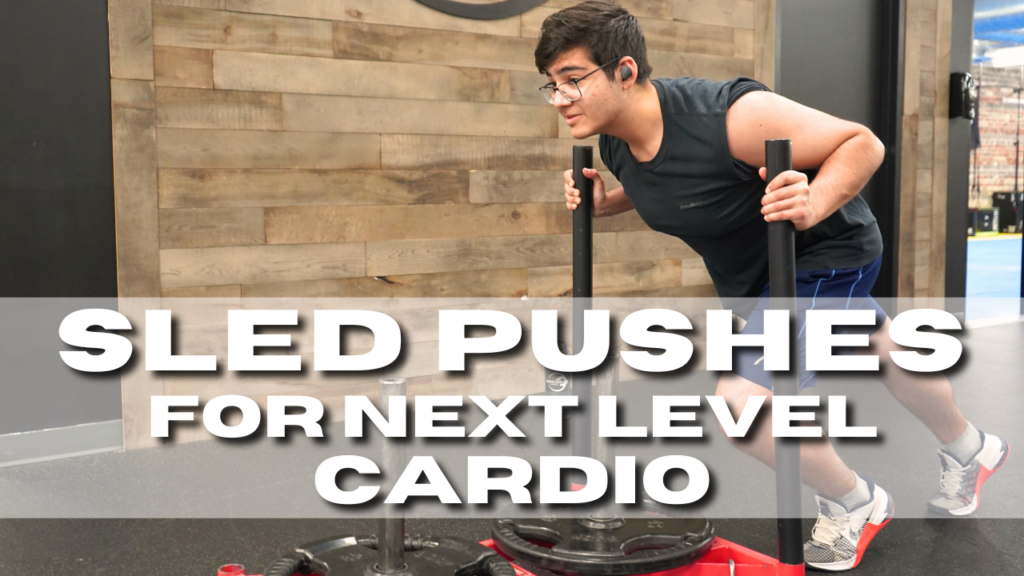
5 Powerful Reasons Why Sled Pushes Are the Ultimate Cardio & Conditioning Tool
If you’re looking for a high-intensity, low-impact workout that builds strength, endurance, and explosive power, look no further than the sled push. Used by elite athletes and fitness enthusiasts alike, this exercise is a game-changer for cardiovascular conditioning, fat loss, and work capacity. Whether you’re an athlete, a weekend warrior, or just someone who wants a killer workout without the joint stress, sled training is one of the most effective ways to improve overall fitness.
In this article, we’ll dive into the science-backed benefits of sled pushes for cardiovascular health, endurance, and conditioning—all while keeping joint impact minimal.
1. High-Intensity Cardio Without Running
Traditional cardio workouts like running or cycling are great for heart health, but they don’t always provide full-body activation. Sled pushes engage multiple muscle groups, including the legs, core, and upper body, demanding more oxygen and pushing your cardiovascular system to its limits.
A study published in the Journal of Strength and Conditioning Research found that sled sprint training significantly improves anaerobic performance and overall work capacity compared to traditional running drills (Lockie et al., 2017). This makes it an efficient alternative to sprints, especially for those looking to increase heart rate, burn calories, and build muscular endurance at the same time.
How to Implement: Try sled sprints (20-30 yards) with moderate to heavy weight. Rest for 30-60 seconds between rounds to maximize conditioning effects.
2. Low-Impact Conditioning for Safer Workouts
Unlike running, jumping, or high-impact movements, sled pushes are entirely concentric—meaning they don’t cause excessive stress on the joints. This makes them ideal for individuals recovering from injuries, older adults, or those with knee, ankle, or hip issues.
According to research from the British Journal of Sports Medicine, high-impact activities can increase joint wear and tear over time, making sled pushes an excellent alternative for building endurance without the risk of overuse injuries (Neal et al., 2019).
How to Implement: Use sled pushes for active recovery or low-intensity steady-state (LISS) cardio. Push a lighter sled for 40-60 yards at a steady pace for 5-10 rounds.
3. Increases Work Capacity and Stamina
Work capacity refers to your ability to sustain effort over time. Sled training trains both aerobic and anaerobic systems, making it an efficient method for increasing endurance and recovery speed between high-intensity efforts.
Research from the National Strength and Conditioning Association (NSCA) suggests that sled training enhances an athlete’s ability to perform repeated high-intensity efforts, which is crucial for sports like football, hockey, and MMA (Bishop et al., 2020). Even for non-athletes, this translates to better stamina, improved recovery times, and increased overall fitness.
How to Implement: Try interval-style sled workouts (push for 30-60 seconds, rest for 60 seconds, repeat for 5-10 rounds). This mimics real-world conditioning demands and improves overall stamina.
4. Burns Fat While Preserving Muscle
Sled pushes burn a high amount of calories without the risk of muscle loss associated with long-duration cardio. This makes it one of the best conditioning exercises for fat loss while preserving lean muscle mass.
A study in the European Journal of Applied Physiology found that high-intensity sled training can lead to significant increases in metabolic rate and fat oxidation compared to steady-state cardio (Granata et al., 2018). The resistance from the sled forces the body to engage more muscle fibers, leading to greater energy expenditure even after the workout is over.
How to Implement: Use a moderate weight sled push for 15-20 yards as part of a high-intensity interval training (HIIT) workout.
5. Develops Functional Strength and Explosive Power
Beyond cardio benefits, sled pushes develop real-world strength by mimicking functional movements like pushing, sprinting, and acceleration. This is especially beneficial for athletes who need explosive power, but it also translates to everyday activities like climbing stairs, carrying groceries, or playing with kids.
According to a study in Sports Medicine, sled pushing improves lower body strength and acceleration more effectively than standard leg exercises alone (Petrakos et al., 2016). This makes it an excellent addition for those looking to improve both conditioning and athletic performance.
How to Implement: Add sled drags, sprints, and resisted marches into your weekly routine to develop explosiveness and power.
Final Thoughts: Why You Should Start Pushing a Sled Today
Sled pushes are one of the most versatile, effective, and joint-friendly conditioning tools available. Whether you’re looking to boost cardiovascular endurance, burn fat, or build functional strength, incorporating sled training into your program can provide massive benefits with minimal injury risk.
At White Lion Strong Gym, we use sled training to help our members build strength, explosive power and unstoppable endurance. Ready to experience the benefits for yourself? Come try a sled push workout at our facility today!
References
Bishop, D., Turner, A., & Read, P. (2020). Effects of resisted sled sprint training on sprint performance: A systematic review and meta-analysis. Journal of Strength and Conditioning Research, 34(5), 1501-1515.
Granata, C., Oliveira, R. S., Little, J. P., & Bishop, D. J. (2018). High-intensity exercise and skeletal muscle mitochondrial biogenesis: A brief review. European Journal of Applied Physiology, 118(1), 11-19.
Lockie, R. G., Moreno, M. R., Lazar, A., Orjalo, A. J., Giuliano, D. V., Risso, F. G., & Davis, D. L. (2017). The effects of sled towing on sprinting kinetics and kinematics in athletes. Journal of Strength and Conditioning Research, 31(5), 1134-1141.
Neal, B. S., Lack, S. D., & Barton, C. J. (2019). The role of running impact forces in the development of lower limb injuries. British Journal of Sports Medicine, 53(16), 983-989.
Petrakos, G., Morin, J. B., & Egan, B. (2016). Resisted sprint training in sprinting and team sports: A systematic review. Sports Medicine, 46(3), 381-392.